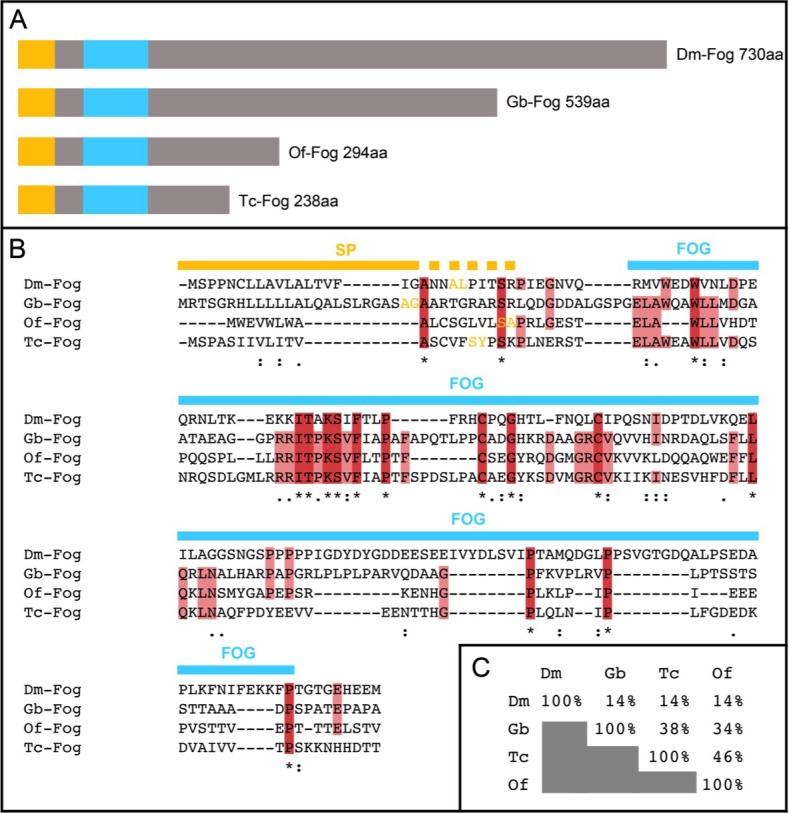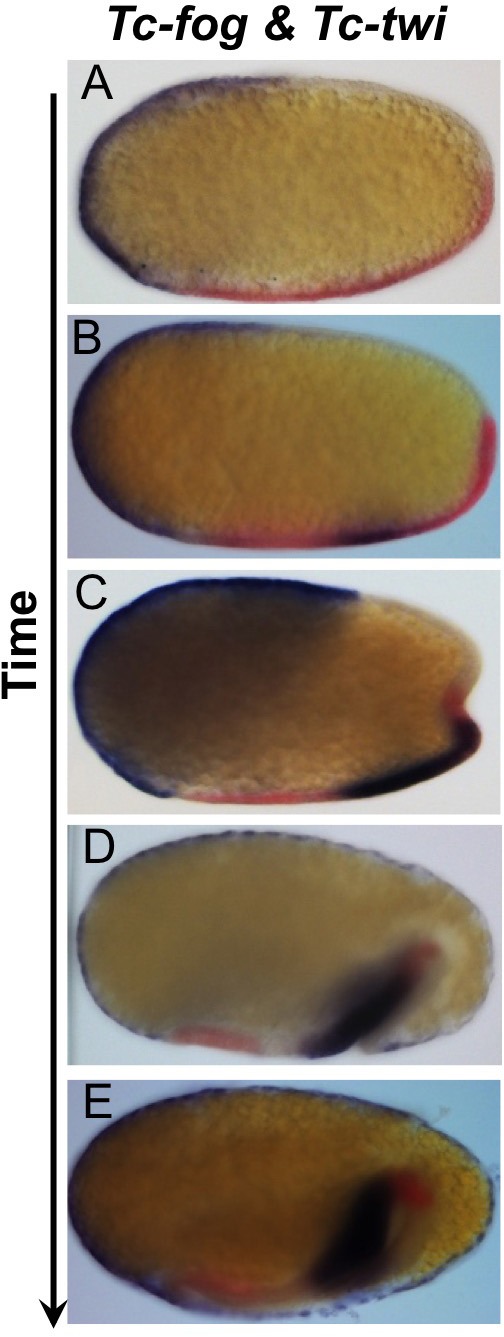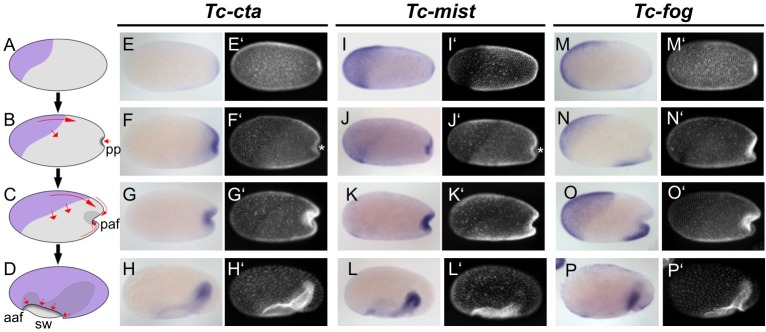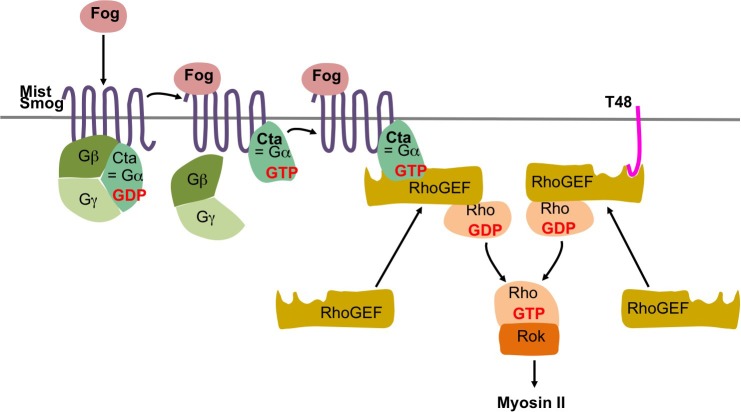Figure 1. Expression of Fog signaling components during early embryogenesis.
(A–D) Schematics showing embryo condensation as described in the text. Serosa is shown in purple, germ rudiment tissue is shown in gray, arrows display tissue movements. aaf: anterior amniotic fold, paf: posterior amniotic fold, pp: primitive pit, sw: serosal window. (E–P’) Whole mount ISH and DNA staining for Tc-cta (E–H), Tc-mist (I–L) and Tc-fog (M–P). (E’–P’) nuclear (DAPI) staining of respective embryos. Anterior is left, ventral is down (where possible to discern).
Figure 1—figure supplement 1. Fog and T48 pathway in Drosophila.
Figure 1—figure supplement 2. Insect Fog proteins.

Figure 1—figure supplement 3. Expression of Tc-cta, Tc-mist and Tc-fog during early embryogenesis.
Figure 1—figure supplement 4. Tc-fog and Tc-twi are co-expressed only within the posterior presumptive mesoderm.




